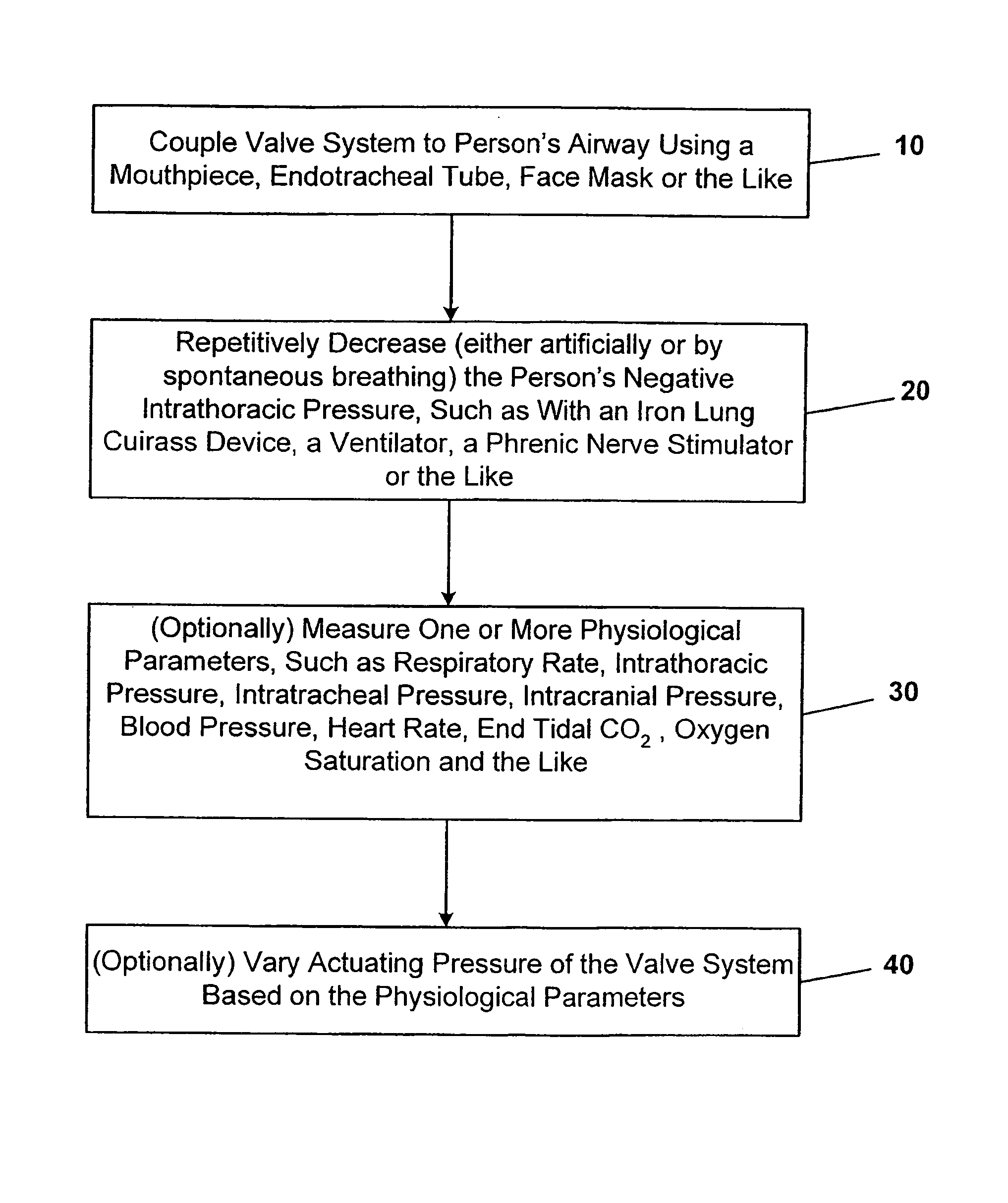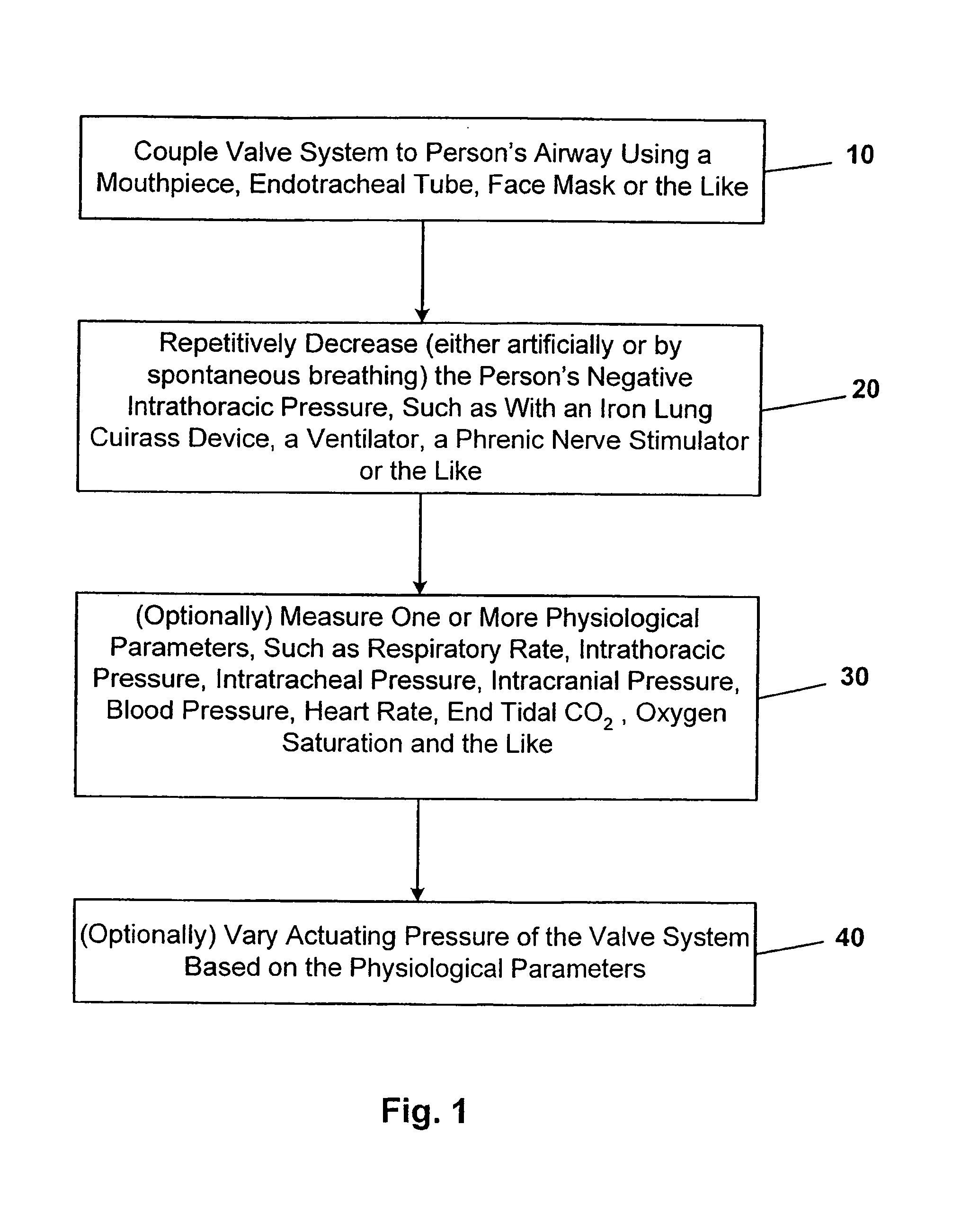Systems and methods for reducing intracranial pressure
a technology of intracranial pressure and system, applied in the field of intracranial and intraocular pressure, can solve problems such as brain swelling, death or serious brain injury, and achieve the effect of reducing the risk of strok
- Summary
- Abstract
- Description
- Claims
- Application Information
AI Technical Summary
Benefits of technology
Problems solved by technology
Method used
Image
Examples
example
[0044]The following is a non-limiting example illustrating how intracranial pressures may be lowered according to the invention. In this example, 30 kg pigs were anesthetized with propofol. Using a micromannometer-tipped electronic Millar catheter inserted below the dura, intracranial pressures were measured continuously in the spontaneously breathing pigs. Intrathoracic pressures (ITP) were recorded using a Millar catheter placed in the trachea at the level of the carina. After stabilizing the pigs blood pressure, heart rate, and ventilation rate, intracranial pressures (ICP) and intrathoracic pressures were recorded, with 0 cmH2O inspiratory impedance and then with inspiratory impedances of 5,10,15, and 20 cm H2O. Inspiratory impedance was achieved using an impedance threshold valve (ITV) as described in FIGS. 2–5.
[0045]At base, the intracranial pressure was approximately 8 / 4 mmHg. With increasing amounts of inspiratory impedance, the intracranial pressure was lowered proportional...
PUM
 Login to View More
Login to View More Abstract
Description
Claims
Application Information
 Login to View More
Login to View More - R&D
- Intellectual Property
- Life Sciences
- Materials
- Tech Scout
- Unparalleled Data Quality
- Higher Quality Content
- 60% Fewer Hallucinations
Browse by: Latest US Patents, China's latest patents, Technical Efficacy Thesaurus, Application Domain, Technology Topic, Popular Technical Reports.
© 2025 PatSnap. All rights reserved.Legal|Privacy policy|Modern Slavery Act Transparency Statement|Sitemap|About US| Contact US: help@patsnap.com



